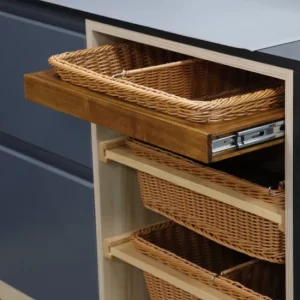Kitchen Renovation Ideas – From Traditional to Modern

Kitchen renovation ideas that blend traditional with contemporary elements can produce an appealing result. One effective way of updating your kitchen without breaking your budget is changing cabinet hardware; updating with new knobs and pulls can add a fresh, modern flair.
Consider how a feature will appeal to future buyers when selecting custom features, for instance a walk-in wine cellar may only appeal to certain demographics.
Cabinets
If you want a fresh new look but can’t afford an entire kitchen renovation, why not just update the cabinet doors instead? This more economical solution allows you to still add crown or specialty molding for added flair in the space.
Replacing the hardware can also be an inexpensive but effective update to your kitchen, even something as small as switching from brass knobs to sleek chrome handles can make an instantaneous difference in its look and feel.
While not strictly speaking a renovation, switching out your appliances for energy-efficient models could save both money and help the environment. Installing LED lighting, low-flow faucets, tankless hot water systems that heat on demand as well as slip-resistant flooring and an attractive range hood could also reduce energy usage significantly while simultaneously improving your monthly bills and home value when selling time comes around.
Countertops
Traditional kitchens should feel cozy and lived-in, creating an intimate setting for everyday meals. To accomplish this, add personalized decorative elements; for instance, adding glaze-covered cabinets and plastered walls add old world charm while marble backsplash gives the space an air of luxury.
Consider installing wood countertops to bring an element of warmth into your kitchen. Not only does the material add visual and tangible comfort, it is also easier than you might expect to keep clean – simply apply food-grade oil once every month for maximum appearance!
Honed or polished marble is another versatile choice that works well in kitchens of all styles, blending perfectly with any color palette. As an alternative to natural stone, another popular material choice is soapstone. Composed of magnesium-rich steatite (a magnesium-rich mineral), soapstone offers both heat- and scratch-resistance. In Nashville kitchen designer Jeremy Clark used soapstone in this nod to Albert Hadley while also topping his island off with custom mosaic tile backsplash and covering a banquette cushion in fabric that complemented terra-cotta tile flooring flooring perfectly.
Flooring
Kitchens are high-traffic spaces, so the flooring must be durable yet easy to maintain and water resistant. Tile is often chosen because it works well in both traditional and contemporary designs; hardwood flooring adds warmth, character, and also improves with age.
Reclaimed hardwoods provide an eco-friendly option and reflect today’s repurposing trend, or you could go with something like marble or terra cotta tile to give your kitchen an updated appearance.
Paint can be an affordable and straightforward way to enhance the aesthetics of your kitchen, yet its low durability puts it behind other options. To increase its resilience further, consider applying a clear coat layer over it in order to prevent staining from taking place.
If your space is large and open-plan, consider creating distinct zones within it to define areas. Designer Laura Kay used plank walls capped in molding to separate her kitchen from living and dining rooms while using nature-inspired hues of blue cabinetry for visual unification.
Storage
An efficient kitchen can make all the difference when it comes to quick and effortless meal prep, or reaching for takeout. These storage ideas (from expandable drawer dividers to labeled chip clips) will help you achieve Carrie Bradshaw-worthy organization without compromising traditional kitchen design aesthetics.
If your budget allows, consider installing floor-to-ceiling cabinets along your walls for an eye-catching custom look and ample storage space. If your ceilings don’t allow this option, use simple treatments like cafe curtains or open shelves instead as ways of displaying decorative accessories and daily dishes.
Layering surfaces is a quick and effective way to control clutter in a kitchen, like this example with black upper cabinets on one wall and light oak lowers on another. Open shelving helps add visual balance while keeping frequently-used items readily accessible; pullout shelves make accessing deeper cabinets easier still.






